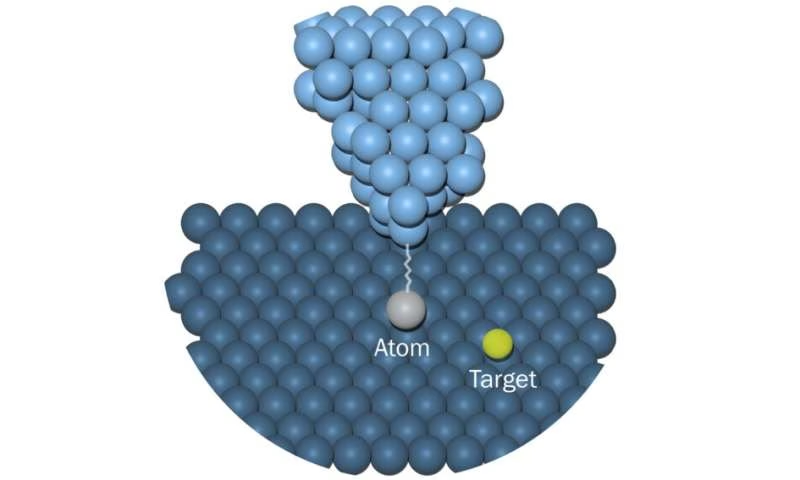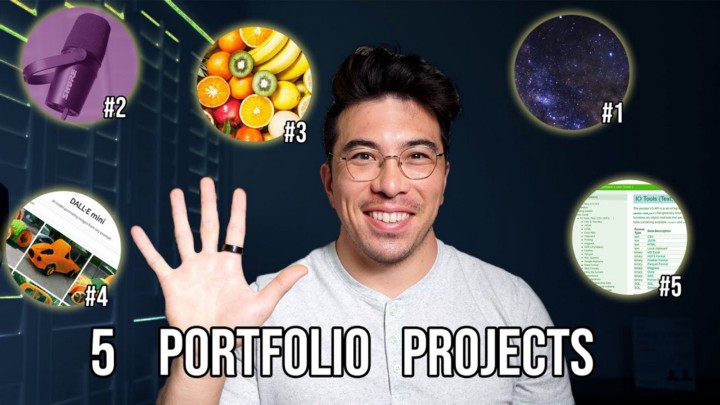The smallest robotic arm you can imagine is controlled by artificial intelligence
SOURCE: TECHXPLORE-COM.CDN.AMPPROJECT.ORG/
DEC 08, 2022

In a very cold vacuum chamber, single atoms of silver form a star-like lattice. The precise formation is not accidental, and it wasn't constructed directly by human hands either. Researchers used a kind of artificial intelligence called deep reinforcement learning to steer the atoms, each a fraction of a nanometer in size, into the lattice shape. The process is similar to moving marbles around a Chinese checkers board, but with very tiny tweezers grabbing and dragging each atom into place.
The main application for deep reinforcement learning is in robotics, says postdoctoral researcher I-Ju Chen. "We're also building robotic arms with deep learning, but for moving atoms," she explains. "Reinforcement learning is successful in things like playing chess or video games, but we've applied it to solve technical problems at the nanoscale."
So why are scientists interested in precisely moving atoms? Making very small devices based on single atoms is important for nanodevices like transistors or memory. Testing how and whether these devices work at their absolute limits is one application for this kind of atomic manipulation, says Chen. Building new materials atom-by-atom, rather than through traditional chemical techniques, may also reveal interesting properties related to superconductivity or quantum states.
The silver star lattice made by Chen and colleagues at the Finnish Center for Artificial Intelligence FCAI and Aalto University is a demonstration of what deep reinforcement learning can achieve. "The precise movement of atoms is hard even for human experts," says Chen.
"We adapted existing deep reinforcement learning for this purpose. It took the algorithm on the order of one day to learn and then about one hour to build the lattice." The reinforcement part of this type of deep learning refers to how the AI is guided—through rewards for correct actions or outputs. "Give it a goal and it will do it. It can solve problems that humans don't know how to solve."
Applying this approach to the world of nanoscience materials is new. Nanotechniques can become more powerful with the injection of machine learning, says Chen, because it can accelerate the parameter selection and trial-and-error usually done by a person.
"We showed that this task can be completed perfectly through reinforcement learning," concludes Chen. The group's research, led by professors Adam Foster and Peter Liljeroth, was recently published in Nature Communications.
LATEST NEWS
Augmented Reality
Hi-tech smart glasses connecting rural and remote aged care residents to clinicians
NOV 20, 2023
WHAT'S TRENDING


Data Science
5 Imaginative Data Science Projects That Can Make Your Portfolio Stand Out
OCT 05, 2022

AI Is Set To Change Fertility Treatment Forever
SOURCE: HTTPS://CODEBLUE.GALENCENTRE.ORG/
NOV 06, 2023
AI-empowered system may accelerate laparoscopic surgery training
SOURCE: HTTPS://WWW.NEWS-MEDICAL.NET/
NOV 06, 2023
Here’s Everything You Can Do With Copilot, the Generative AI Assistant on Windows 11
SOURCE: HTTPS://WWW.WIRED.COM/
NOV 05, 2023
Tongyi Qianwen, An AI Model Developed By Alibaba, Has Been Upgraded, And Industry-specific Models Have Been Released
SOURCE: HTTPS://WWW.BUSINESSOUTREACH.IN/
OCT 31, 2023
Stability AI Launches Stable Audio — Generate Music Using Artificial Intelligence
SOURCE: HTTPS://WWW.DIGITALMUSICNEWS.COM/
SEP 13, 2023
Ikigai Labs: $25 Million Raised To Advance Generative AI For Tabular Data
SOURCE: HTTPS://PULSE2.COM/
AUG 27, 2023




